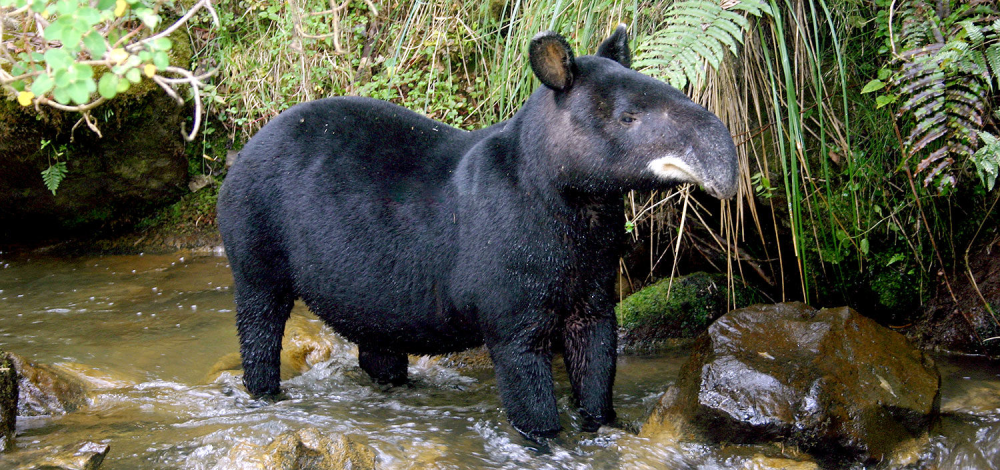In the mystic realms of the Andean cloud forests, where the veils of mist dance with the peaks, dwells a creature of sublime rarity and enigmatic allure – the Mountain Tapir (*Tapirus pinchaque*). Amidst the rugged terrain and dense foliage, this elusive herbivore embodies a tapestry of evolutionary marvels, cultural significance, and conservation challenges.
A Living Anachronism
The Mountain Tapir, often referred to as the woolly tapir, stands as a living relic from a bygone era. Belonging to the genus Tapirus, which traces its lineage back millions of years, these solitary mammals are the smallest and most cold-adapted of the tapir species. Cloaked in a dense, woolly fur coat of dark brown to black, they navigate the steep slopes and mist-laden forests with a grace that belies their hefty stature.
Habitat and Distribution
Endemic to the high-altitude realms of the Andes Mountains, spanning across Colombia, Ecuador, Peru, and Venezuela, the Mountain Tapir is a master of its rugged domain. Thriving in elevations ranging from 1,800 to 4,500 meters (5,900 to 14,800 feet), these tapirs carve out a niche existence in the cloud forests, páramos, and montane grasslands where the oxygen is thin, and the temperatures fluctuate dramatically.
Ecological Keystone
Despite their elusive nature, Mountain Tapirs play a crucial role as ecological keystone species within their habitats. As selective herbivores, they shape the structure of their environment through their feeding habits, influencing plant diversity and distribution. Additionally, their droppings serve as vital nutrient inputs, contributing to the fertility of the soil and supporting the intricate web of life within the cloud forests.
Cultural Significance
Embedded within the fabric of Andean cultures, the Mountain Tapir holds a revered status as a symbol of resilience and adaptation. Revered by indigenous communities as guardians of the high mountains, these creatures feature prominently in folklore, where they are often depicted as mystical beings with supernatural powers. Their presence in the cultural narrative underscores the intrinsic connection between humans and the natural world, serving as a poignant reminder of our collective responsibility towards conservation.
Conservation Challenges
Despite their cultural significance and ecological importance, Mountain Tapirs face an array of conservation challenges that threaten their survival. Habitat loss and fragmentation due to agricultural expansion, logging, and infrastructure development pose significant threats to their dwindling populations. Additionally, illegal hunting for meat and traditional medicine exacerbates their vulnerability, pushing them towards the brink of extinction.
Conservation Efforts
In response to these mounting challenges, concerted efforts are underway to safeguard the future of the Mountain Tapir. Conservation organizations, governmental agencies, and also local communities are working together to establish protected areas, implement habitat restoration initiatives, and combat illegal hunting through education and enforcement measures. Furthermore, research endeavors aimed at understanding the species’ behavior, ecology, and genetics are providing invaluable insights that inform conservation strategies.
Looking to the Future
As we stand at a critical juncture in the Mountain Tapir’s plight, it is imperative that we redouble our efforts to ensure their survival. So, by fostering collaboration, raising awareness, and advocating for their protection, we can safeguard the legacy of these majestic creatures for generations to come. In doing so, we not only preserve a species but also uphold the rich tapestry of biodiversity that lends enchantment to the Andean landscapes. Let us pledge to be stewards of the high mountains and guardians of the Mountain Tapir, for they are the silent sentinels of the Andean heights, deserving of our utmost reverence and respect.










